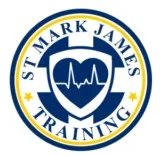For five months, Montreal paramedics were told to suspect CPR efforts on patients whose hearts had stopped. It was considered too risky at a time when COVID-10 was not well understood.
The decision was made in conjunction with Quebec’s health ministry and its college of physicians. During those five months, starting in early April, some patients who were in the midst of a certain kind of serious heart stoppage were not given CPR or a defibrillator while on the way to the hospital.
Paramedics would start their work the same as usual, but when people ‘flatlined’, the paramedics would stop their attempts to revive them.
There are different types of heart attacks and stages, where each has its own prospects for survival. Cardiac arrest refers to the moment where a person’s heart suddenly stops beating.
It can be due to a heart attack that has created circulation problems, or by other, more sudden, causes.
Shortly after COVID-19 arrived in Quebec, Urgences-Sante and those advising it looked at data around people who suffered cardiac arrests “in the street” or at home. They concluded that the chance you will survive a cardiac arrest after flatlining is only 1-2 percent.
It is unlikely that using a defibrillator or CPR will revive the person at that point, and if it does, and even if they are taken to the hospital, only that small fraction of people will recover fully.

A group of experts, doctors, and paramedics made the protocol, which is comparable to those in other countries according to the health ministry. The protocol was approved by the table of regional medical directors and by the College of Physicians.
Importance of first aid training
Cardiopulmonary resuscitation (CPR) and using an automated external defibrillator (AED) can save a life. Prompt delivery of life-saving techniques improves the chances of survival during emergencies.
For more information about this story, click here.
LEARN MORE
Learn how to be ready for emergencies by enrolling in our first aid and CPR course. Our courses maintain social distancing measures with reduced class sizes to maintain the minimum 2 meters apart along with the mandatory use of face masks and regular temperature checks. The venue of the courses undergo regular, enhanced cleaning and disinfection routines.
For more information, check out these sources:
https://www.healthdirect.gov.au/how-to-perform-cpr
https://www.mayoclinic.org/first-aid/first-aid-cpr/basics/art-20056600

